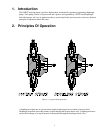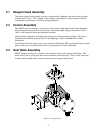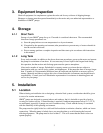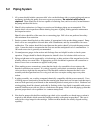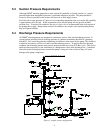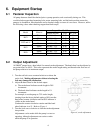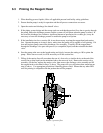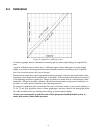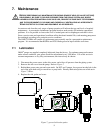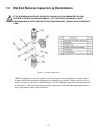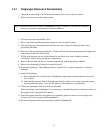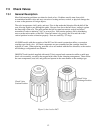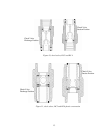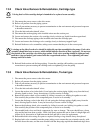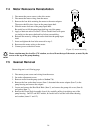
9
7. Maintenance
B
EFORE PERFORMING ANY MAINTENANCE REQUIRING REAGENT HEAD OR VALVE
(
WET END
)
DISASSEMBLY
,
BE SURE TO RELIEVE PRESSURE FROM THE PIPING SYSTEM AND
,
WHERE
HAZARDOUS PROCESS MATERIALS ARE INVOLVED
,
RENDER THE PUMP SAFE TO PERSONNEL
AND THE ENVIRONMENT BY CLEANING AND CHEMICALLY NEUTRALIZING AS APPROPRIATE
.
W
EAR PROTECTIVE CLOTHING AND EQUIPMENT AS APPROPRIATE
.
Accurate records from the early stages of pump operation will indicate the type and levels of required
maintenance. A preventative maintenance program based on such records will minimize operational
problems. It is not possible to forecast the lives of wetted parts such as diaphragms and check valves.
Since corrosion rates and operational conditions affect functional material life, each metering pump must
be considered according to its particular service conditions.
The OMNI
®
KOPkit will contain all replacement parts normally used in a preventative maintenance
program. It is recommended that KOPkits and PULSAlube grease be kept available at all times.
7.1 Lubrication
OMNI
®
pumps are supplied completely lubricated from the factory. For optimum pump performance
under normal conditions, gear grease should be redistributed every 1500 hours. For severe service in
extreme temperatures or very dirty environments, this interval may be shorter.
1. Disconnect the power source to the drive motor, and relieve all pressure from the piping system.
2. Remove the side cover from the pump. Refer to Figure 7.
3. Redistribute grease onto gear and worm teeth. On DC2 and 3 pumps, force grease into the hole in the
end of the gear shaft using a screwdriver or putty knife. Primary lubrication points are called out in
Figure 7, below.
4. Replace the side gasket and cover.
Figure 7, gearset lubrication points



